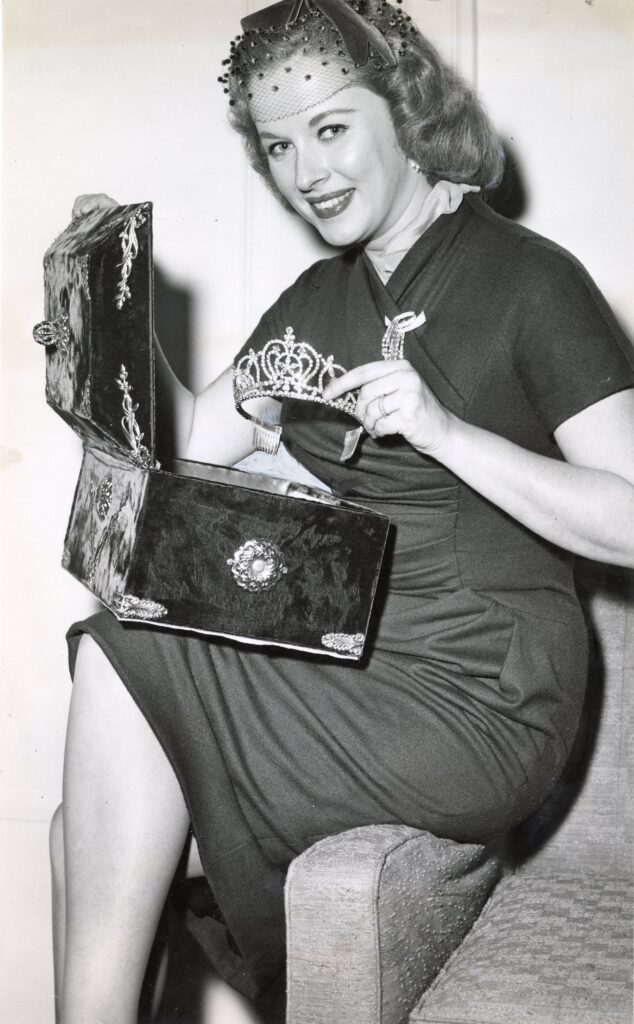Actor Bradley Cooper’s depiction of the life and career of Leonard Bernstein in the new critically acclaimed film Maestro renewed fond memories of working with the famed composer and conductor for renowned opera singer and Knoxville native Mary Costa.
Costa collaborated with Bernstein four times throughout her career for Candide, a comic operetta based on Voltaire’s 1759 satirical novella. Bernstein composed the songs and music for Candide around the same time he worked on West Side Story.
The recipient of a 2014 honorary doctorate from UT, Costa credits Bernstein as instrumental in shifting her focus from movie and television acting into an acclaimed opera career. She had just made her European debut singing at the Glyndebourne Festival in England when a producer encouraged her to audition for an upcoming American concert tour of Bernstein’s Candide.
A Broadway production of Candide with Bernstein’s music had closed after a short run and mixed reviews in early 1957. A seven-week American tour with many of the original production’s stars was mounted to sustain interest as problematic story elements were worked out ahead of a revamped opening on London’s West End.
Barbara Cook’s coloratura aria “Glitter and Be Gay” had proven a highlight for New York audiences and critics alike, but Cook had moved on to Carousel and The Music Man by 1958. The search was on for a new singer to fill the vocally demanding role of Cunegonde.
At home in Los Angeles, Costa spent an afternoon learning “Glitter and Be Gay.” She performed the song for composer and conductor Lukas Foss, who immediately called his friend Bernstein in New York.
Costa’s association with Candide and her subsequent opera career might not have happened, she said, except for a twist of fate.
“Bernstein’s assistant told us that he had just left for the airport on a lengthy trip, so my heart sank,” Costa says. “But just as she was about to hang up, the assistant said, ‘Wait, Mr. Bernstein’s coming back in.’ He had forgotten his car keys!”
Once Bernstein took the call, the decision was made to cast Costa in an American concert tour of Candide based on the recommendation of Foss and Costa’s enthusiasm over the phone.
“That phone call really is the story of the serious start of my career on stage because Bernstein took his friend’s word for it that I was right for the role,” Costa says.
The 1958 concert tour was a scaled-down production, lacking costumes and stylized sets. Costa earned good reviews, including one for an appearance at Maryville College, before the tour concluded in San Francisco and Los Angeles.
By then, Bernstein had seen and heard Costa sing. At his insistence, she traveled to England to begin rehearsals for a revised version of Candide. The show opened in tryouts in Oxford, Bristol, Liverpool, and Manchester before its premiere on April 30, 1959, at the Saville Theatre in London, where Bernstein personally conducted her several times.
“To work with him was a dream because he was just so exact on everything,” Costa says. “Every time I performed ‘Glitter,’ he would look up and wink and smile. I’ve never forgotten that.”
Costa remembers Bernstein as an absolute perfectionist who still laughed and made little jokes through his intense personality. Renowned for his animated conducting style, Bernstein made a lasting impression on Costa. “He was a perfect conductor to work with because he was so enthusiastic, pulling you along. You could see his arms and hands sweeping along with you as you sang.”
After 60 performances in London’s West End, the show ended. Costa’s opera career flourished with the San Francisco Opera. She made her New York Metropolitan Opera debut in La Traviata in January 1964, and a successful career grew to include 44 operas among her credits.
In 1971, Edwin Lester, the head of the Civic Light Opera in Los Angeles, planned an updated version of Candide. Recognizing that Costa’s fame had grown since 1959, Lester wanted to cast her again as Cunegonde.
“He called Leonard Bernstein, who said, ‘Well, Mary’s absolutely magnificent, but it’s been so long now that I don’t know how she will sound.’”
Bernstein flew to Los Angeles for a rehearsal to hear for himself if Costa could still carry the role more than a dozen years after her last performance in the London production.
“We had this rehearsal in a huge room with a long table. We started and Leonard was sitting behind the table with everyone connected with the production. It finally came time for me to sing, and Bernstein was so excited that he jumped over the table and took me in his arms and told me that it was better than ever!”
Bernstein made changes to the show in San Francisco and through another series of performances in Los Angeles. In October 1971, Candide became the first musical to play at the opera house during the opening festivities of the new Kennedy Center for the Performing Arts in Washington, DC, marking Costa’s final collaboration with Bernstein. The updated show was intended to open on Broadway the following month but never made it.
Costa continued to perform Bernstein’s work, however, often including “Glitter and Be Gay” in her solo operatic concerts throughout the rest of her career. “I would come out with the signature jewel box that the character carries and do the aria again, and the audience would just laugh when I brought out the box on stage.”
Early in her career, Costa had recorded the speaking and singing voice of Princess Aurora in Walt Disney’s Sleeping Beauty, one of several movies and numerous television shows among her credits. Her transition to opera had generated press and public interest as audiences were curious to hear if she could sing more demanding roles.
“I owe a great debt of gratitude to Leonard Bernstein for helping me on my path to a serious opera career,” Costa says. “Appearing in Candide came about at the perfect time since it was an operetta. Touring in the concert version helped me learn how to appear in front of live audiences. After that, I was really on my way. I have nothing but fond memories of working with him.”
—
Photos courtesy of Mary Costa



2 comments
What a wonderful story!
Jim Hollifield succeeds in the seemingly insurmountable task of summarizing an incredible, almost mythic, connection between two artists history will never forget. Top tier Americana is seamlessly translated into a clear timeline with information packed to the rafters, while miraculously retaining the tone of Mary Costa’s superlative voice throughout.
One of the most awe-inspiring feats of the article is its gem-like nuggets of information, presented here for the first time. Instead of succumbing to the more common course of repeating oft-told stories, as most retrospectives fall victim to, this tribute is an original, illuminating look at two legendary figures. The adornment of multifaceted stones we uncover through its passage is as dazzlingly brilliant and novel as the contents of Cunegonde’s famous treasure chest.
The artistry of this writing truly contains sharper clarity and rarer purity than that of Cunegonde’s jewels! I am moved by this piece, which is a credit to both Mary Costa and Leonard Bernstein. All of us who are privileged enough to read this will emerge “Glitteringly Gay.” Thank you, Mr. Hollifield, for affording us a breathtaking view into “The Best of All Possible Worlds.”